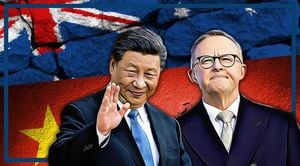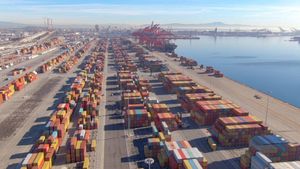Oil prices have become quite the rollercoaster ride lately, driven by several dynamic factors, including the restart of the Sverdrup oil field and various geopolitical tensions. Following the restart of production at Norway's giant Johan Sverdrup oil field, prices initially took a dip, but the overall picture is muddied by the ever-shifting geopolitical climate. Traders are feeling the pressure from renewed supply concerns amid mounting tensions worldwide, especially with the OPEC+ producers adjusting their output expectations.
The Sverdrup oil field, located off the coast of Norway, is one of Europe's largest offshore oil fields. It recently ramped up operations after maintenance work, leading to speculation about how its increased output would impact the global oil supply. After all, the Sverdrup field can produce up to 500,000 barrels per day, and with such capacity, any fluctuations from this source can have significant ramifications on oil markets.
Initially, the news of the field's reopening sent prices on the decline. Brent crude, one of the benchmark oils, fell below $90 per barrel, with some analysts attributing the drop to the straightforward supply increase. The anticipated surge from Norway seemed timely, especially as fears of supply shortages began to grow. Yet, this situation quickly complicated as geopolitical factors introduced new layers of uncertainty.
One of those factors is the continued conflict stemming from various global hotspots. For example, tensions involving major oil-producing countries have added volatility to the pricing scene. The war between Russia and Ukraine has led to sanctions and trade restrictions, disrupting traditional supply routes. Not to mention issues surrounding instability within the Middle East, where production disruptions can occur at any moment due to local conflicts.
These geopolitical concerns among producers weigh heavily on the traders' minds, who have to forecast not just supply but also demand moving forward. Economic data coming out of China, for example, has painted mixed signals. With the world's second-largest economy showing signs of slowing down, traders are left wondering if there's enough demand to absorb the increased supply from Sverdrup and any remaining production from other areas. Analysts have highlighted the complex relationship between supply and demand as they navigate through conflicting indicators.
Adding to the mix are the actions of OPEC+, the coalition of oil-producing countries aiming to manage crude production and stabilize prices. Recently, OPEC+ has hinted at potential reductions in output to counteract rising inventory levels globally, which can create downward pressure on prices. This interaction between members of the cartel has historically shown stronger control over the oil market, yet how they respond to the unique challenges posed today remains to be seen.
The International Energy Agency (IEA) has chimed in, providing data indicating global oil demand will likely rise, but with caveats for uncertainties arising out of economic performance and geopolitical strife. They emphasized the importance of tracking these developments, which can rapidly lead to shifts on the ground affecting supply chains globally.
So, as oil traders keep their eyes peeled, the global oil markets are left oscillate between optimism and concern. The events of supply recovery from fields like Sverdrup run parallel to the geopolitical narratives shaping the industry today. With the recent jumps and plummets of oil prices, the sense of unpredictability may become the new norm.
Many experts are now peering across the horizon for signs of stability. Long-term price predictions have become increasingly difficult to pin down as excessive volatility continues to plague the markets. One moment prices might stabilize, the next they seem to skyrocket, driven by nothing more than rumors or reports of unrest impacting oil-producing regions.
While trading dynamics are shifting daily, one thing's for certain: global energy markets will remain complicated as geopolitical repercussions continue to shift the balance of power among players. Supply from fields like Sverdrup will continue to play its part, but traders are recalibrated against the backdrop of uncertain global events. The oil price story is one still unwritten, with new chapters waiting to be revealed on the global stage.



